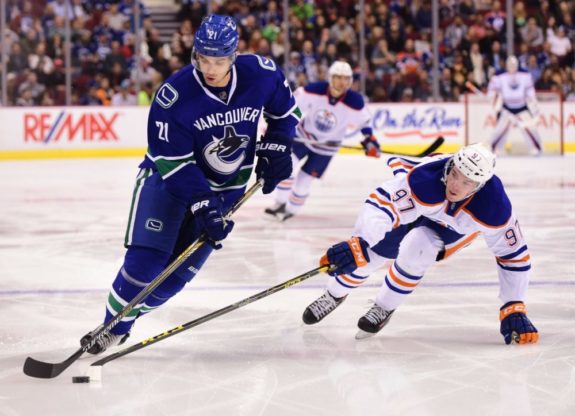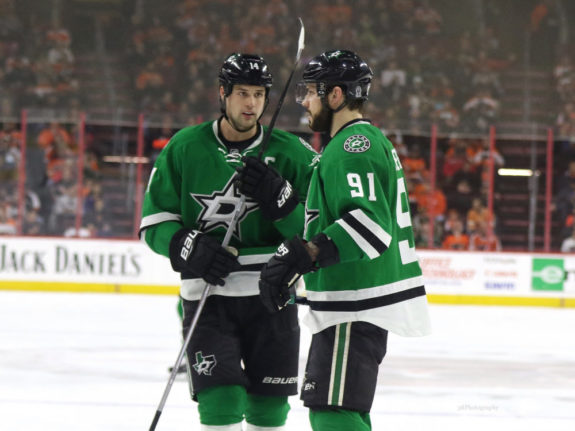The Vancouver Canucks had a horrific season in 2016-17 with terrible statistics across the board. Their penalty kill stats were no exception, as Vancouver had the third-worst penalty kill percentage in the league at 76.7%. With the departures of Alex Burrows and Jannik Hansen last season, an already dismal penalty kill lost two key members and has been left scrambling to fill the void.
Coming into the 2017-18 season, the issue is still very much at large, but solutions can be found, and, so far, the results have definitely improved.
Out of the Gate
Through the first six games, the Canucks’ PK was decent, but nothing special. They are currently 16th in the league with a percentage of 80.6%. A drastic improvement from last season, but, of course, it’s still early. The PK has been lead by the work of Derek Dorsett and Brandon Sutter who have become quite the surprising dynamic duo for the Canucks.

The PK was questioned coming into the season for lacking a two-way center necessary for the kill. Sam Gagner was largely regarded as too slow and therefore ineffective. Adam Gaudette is a potential candidate in the system to fill the role but he is a college commit with the Northeastern Huskies and won’t be of use. Talks of picking up another two-way center were circulating initially, but, with the recent play of the PK and the scheduled return of Brendan Gaunce from injury, the Canucks look fine for now.
The Turning Point
On October 19th, the Canucks took on the Boston Bruins and were defeated 6-3 in a tough game. Erik Gudbranson was given a five-minute major for a dangerous hit on Frank Vatrano that later resulted in a suspension — the Bruins tallied three of their four powerplay goals in the game on that man-advantage. Going into the game, the Canucks’ penalty kill was ranked fourth in the NHL.
After being dismantled by the Bruins, who went 4-for-6 on the power play that night, the Canucks PK tightened up moving into the following games. Their percentage has been a perfect 100% through the last three games, all of which were on the road.
https://twitter.com/TSN1040/status/921484983952461824
The most recent game on this streak of perfection was against the Minnesota Wild on Oct. 24. Minnesota had the best power play in the NHL going into the game with a percentage of 33.3%, but the Canucks were able to shut them down. Sound positional play and an aggressive style have equated to success for Vancouver, and they will need to maintain it moving forward.
Moving Forward
The Canucks’ next three games are all tough, as they will be squaring up with the Dallas Stars, Washington Capitals, and New Jersey Devils. All three teams are in the top-10 of powerplay percentages in the NHL, and all three possess a multitude of talented players. The Stars are sixth in the league with a percentage of 26.1% and are equipped with talents such as Jamie Benn and Tyler Seguin.

The first contest is against the Capitals, who are, of course, manned by Alex Ovechkin, Evgeny Kuznetsov, and Nicklas Backstrom. If the Canucks can shut down Ovechkin, who is second in the NHL with 10 goals, they will have eliminated the Capitals’ main threat and should do alright.
Last Line of Defence
Behind the players is perhaps the most important penalty-killer of all – the goalie. The Canucks have had a pretty good display of goaltending thus far, particularly by Anders Nilsson, who now has two shutouts in just three starts.
🎉 #CANUCKS WIN! 🎉
Virtanen scored, Nilsson stopped everything and Vancouver has back-to-back-to-back wins! 🔥 pic.twitter.com/Gq44yNOiA2— Vancouver Canucks (@Canucks) October 25, 2017
The twin towers of Nilsson and Jacob Markstrom have essentially been splitting starts, and have been sharing the torch quite effectively. Nilsson looked very strong in the outing against the Wild making four of his 28 saves on the penalty kill, helping the Canucks earn their fourth win of a long five-game road trip. Nilsson also went on to be awarded the first star of the game.